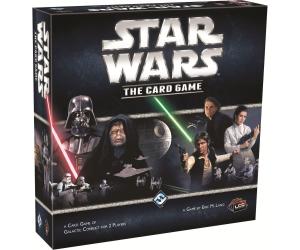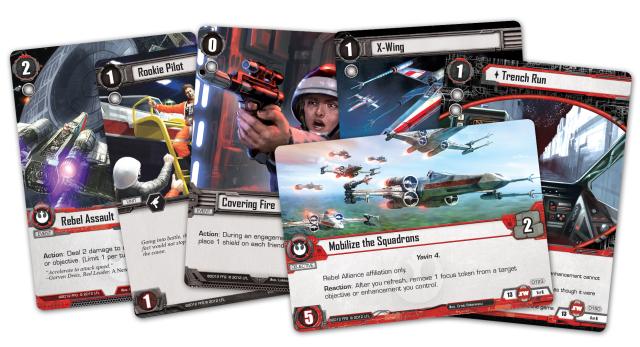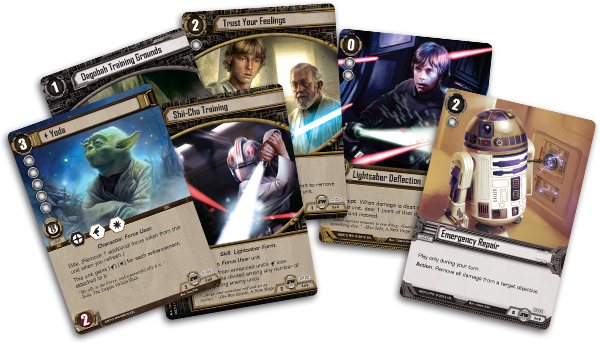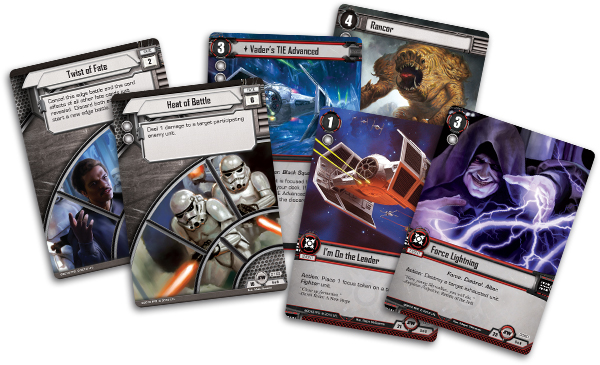Star Wars: The Card Game Review
 Game: Star Wars: The Card Game
Game: Star Wars: The Card Game
Designer: Eric M Lang
Publisher: Fantasy Flight Games
Available on: Any table, preferably one not covered in grease and/or Cheeto dust (unless you fancy investing in some deck protectors)
As one of the few people in my friend group who doesn’t play Magic: The Gathering, it was, I admit, with a small amount of trepidation that I set out to review the Stars Wars card game. I mean, I love Star Wars, but my aptitude for card games has never been something I’m known for: all it takes is an attempt to play a game of poker with me to see that. However, for the sake of the galaxy, I was willing to give it a try.
Upon unboxing the game and removing the moderately-sized instruction booklet, you are greeted with an insert that informs you that you can learn how to play Star Wars: The Card Game with an online video tutorial instead of diving into the manual. After following the supplied URL, I was presented with five chapters: Overview, Dark Side – Turn One, Light Side – Turn One, Dark Side – Turn Two and Deckbuilding (this word filling me with a small amount of dread thanks to the fervour with which I have seen my Magic-playing friends construct their decks).
Having had a cynical few days, I couldn’t help but smirk ever so slightly when the phrase “cinematic gameplay” was used in conjunction with a shot of various cards neatly laid on a game mat in play – we would see about that.

The Rebel Cards!
As well as there being six possible affiliations (Sith and Jedi, for example, being two of these), a deck is also made up of the following cards:
- Objective cards – These represent missions, ideologies and strategies, each of these associated with five other cards that make up an objective set
- Unit cards – Used to represent the various aspects of the Star Wars universe, from characters to creatures, that the player can use to strike at their opponents
- Enhancement cards – Skills, weapons and settings that make units more effective
- Event cards – Special powers and underhand tactics with which to surprise unwary foes
- Fate cards – These represent unpredictable twists that can swing the course of a battle for either side
Destroying objectives is key to winning the game: the Light Side must destroy three Dark Side objectives in order to win, but with each turn the Death Star dial (a rather nice touch as far as flavour goes) ticks closer to victory. Promised “fast-paced combat and high stakes subterfuge” by the online tutorial’s overview video, I was now more than ready to go.

The Jedi Cards
A Balance of the Force token is another key feature of the game, as this is contested throughout the game, with focus, damage and shield tokens gathered in the token pool. Each player also has three Force cards, which are used to commit units to the Force (which means that they are acting or being used away from the front lines in order to further the player’s cause). At the start of the first turn, objective cards are drawn, three turned over after both players have these and one remaining unused at the bottom of each player’s objective deck. The top six cards of each player’s command deck are then drawn in order to make up their respective hands.
Each player’s turn consists of six phases:
- Balance
- Refresh
- Draw
- Deployment
- Conflict
- Force
A little like mana in Magic, resources must be accrued by placing focus tokens on the various cards in play. They can then be used in order to deploy further cards from your hand, although at least one of these resources must come from cards of the correct affiliation for the card being played.
Edge battles, which occur during the conflict phase, are a key feature of the game, and are used to represent combatants manoeuvring for position, gathering intelligence and engaging in sabotage, infiltration and other shady endeavours before the actual physical battle begins. In edge battles, players must bid alternately with face-down cards from their hand, the player whose cards provide them with the most force icons emerging as the victor. Any fate cards that turn up in these edge stacks are also resolved in priority order, which may tip the outcome either way. The winner of the edge battle gets to strike first, his cards also benefiting from any additional bonuses brought about by the edge battle having gone in their favour.

Evil Sith cards. They are evil!
As well as being able to be played straight out of the box, Star Wars: The Card Game is also a living card game, meaning that you can mix and match objective sets in order to build your own decks (although Light and Dark Side objective sets, of course, cannot be mixed).
VERDICT: Star Wars: The Card Game definitely cannot be faulted as far as its instructional materials go: even for a card game novice such as myself, the large, clear manual booklet and accompanying video tutorials made picking up the rules a breeze. The box and tokens are all sturdy and attractive, with the artwork on these and the cards themselves (which feature an array of creatures, characters and events from the Star Wars universe awesome enough to keep any fan happy) both appropriate and beautifully realised. While I definitely enjoyed playing the Star Wars card game once I’d properly absorbed the rules (I blame involuntary mental defiance brought about by years of trying to avoid being sucked into playing Magic), it might not be for everyone if you aren’t a fan of either card games or Star Wars. There’s also the unfortunate matter of it being an exclusively two player game, but considering that the average game length is between 30 minutes and an hour, any queuing backseat emperors will get their turn soon enough. In short, definitely worth playing. You do want to save – or crush – the galaxy, right?




